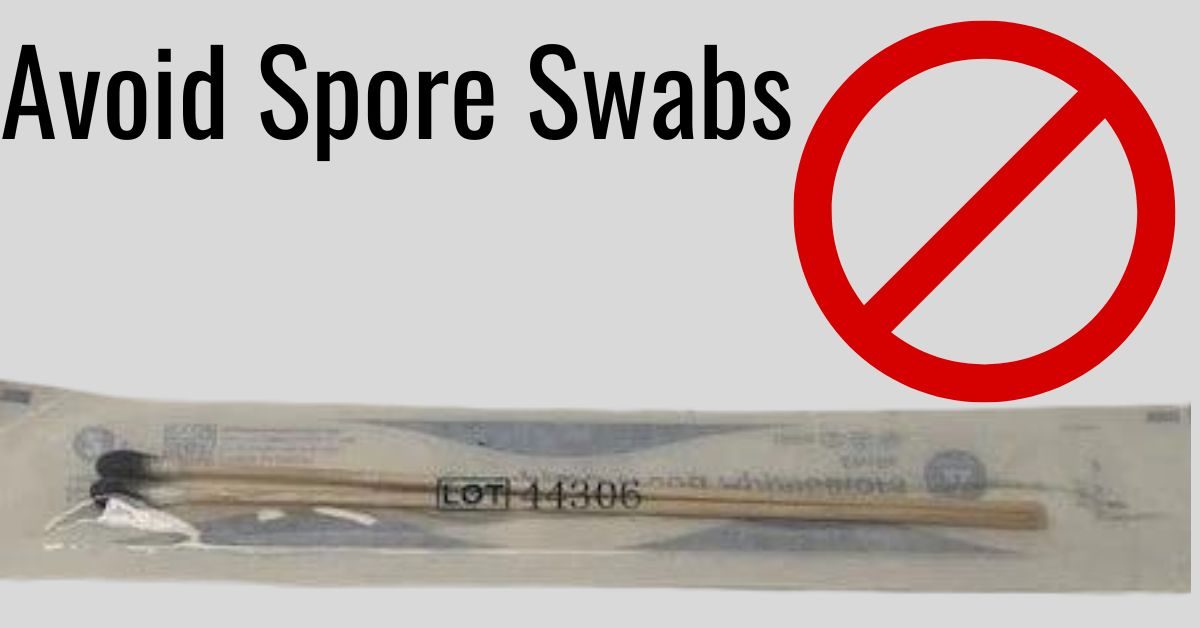Mushroom spore swabs seem to be gaining popularity, but are they really that great compared to spore syringes or liquid culture? In this article, we will discuss spore swabs in detail and dispel any myths about them so that you can choose what kind of mushroom spore product you should purchase.
What are mushroom spore swabs?
A mushroom spore swab is a sterile cotton q-tip that is scraped against the gills of a mushroom to obtain the mushroom’s spores. Mushroom spore swabs are used for various purposes, including storing, transporting, examining, and propagating mushroom spores. The spores are collected on the swab, which can then be stored for future use, transported to another location, analyzed, and studied under a microscope, or used to propagate mushrooms.

Pros of swabs
- Cost-Effective: Spore swabs are extremely cheap to produce, so they are inexpensive for customers to purchase. This makes it easy to experiment with mushroom cultivation without breaking the bank.
Cons of spore swabs
- High risk of contamination. The spore vendor must open the sterile packaging and expose the swab to the air before swabbing the mushroom gills. This significantly increases the risk of contamination, meaning that the customer could purchase a contaminated spore swab that is no longer viable. In addition, the customer’s money would be wasted as the contaminated spore swab would not produce the desired results. Therefore, the risk of purchasing a contaminated spore swab is very high.
- After the spore swab is made by scraping it against the mushroom gills, the spore vendor puts spore swabs back into the original packaging. Again, the customer must rely upon the spore vendor will seal the packaging correctly. This is another risky procedure since the original sterile seal was broken, and the packaging was exposed to the spore vendor’s workroom air. This is another example of spore swabs being at high risk for contamination.
- Because each step of the process is a high risk of contaminating spore swabs, the customer risks wasting their money and potentially months.
- Using spore swabs also requires high-grade laboratory equipment to be consistently successful. Experts can appropriately assemble this equipment. The equipment is also costly since it involves specialty HEPA filters that specialty businesses can only purchase.
Best alternatives to a spore swab for a beginner
The best alternatives to a spore swab are spore syringes and liquid culture syringes. These items are at much lower risk for contamination. In addition, spore and liquid culture syringes are made frequently, even by hobbyists with little experience making them. There is little to no chance of receiving contaminated samples if the spore vendor has the proper equipment and expertise to produce these items in bulk, which can be complicated compared to a hobbyist only making one or two syringes at a time.
Furthermore, using a spore syringe or liquid culture will be much easier for someone new as it does not require using any special equipment to succeed.
Conclusion
As a professional spore vendor, we determine that spore swabs should be avoided, especially by beginners. The risk of contamination is too high. Using them also requires the buyer to have a laboratory-grade flow hood to ensure that they create pure cultures (if the spore swab did not arrive contaminated by the spore vendor).
Author Information



